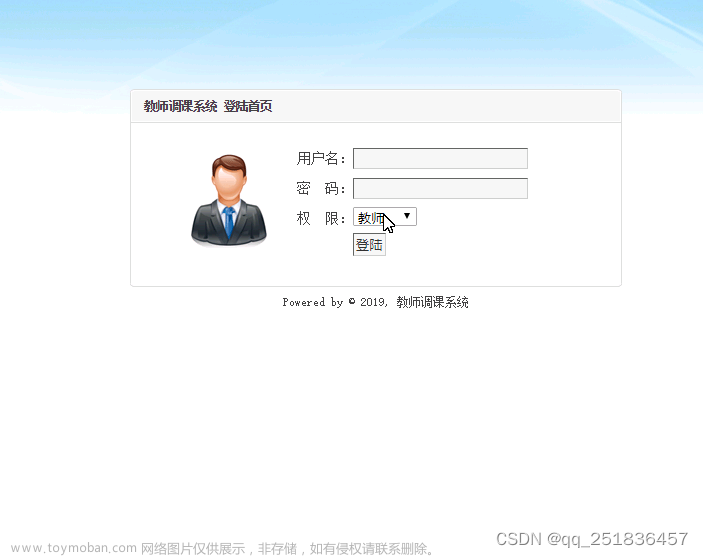目录
一、介绍
二、数组
三、List(列表)
四、Dictionary(字典)
五、Queue(队列)
六、Stack(栈)
七、Hashtable(哈希表)
结束
一、介绍
数据结构是计算机存储、组织数据的方式。数据结构是指相互之间存在一种或多种特定关系的数据元素的集合。通常情况下,精心选择的数据结构可以带来更高的运行或者存储效率。数据结构往往同高效的检索算法和索引技术有关。
它们的逻辑结构通常有:
1.集合:数据结构中的元素之间除了“同属一个集合”的相互关系外,别无其他关系;
2.线性结构:数据结构中的元素存在一对一的相互关系;
3.树形结构:数据结构中的元素存在一对多的相互关系;
4.图形结构:数据结构中的元素存在多对多的相互关系。
下面案例只介绍数据结构中常用的一些用法,因为具体的 API 实在太多了,详细的介绍页可以参考微软的官方文档:
C# 教程 - 概述 | Microsoft Learn
二、数组
可以将同一类型的多个变量存储在一个数组数据结构中。 通过指定数组的元素类型来声明数组。 如果希望数组存储任意类型的元素,可将其类型指定为 object。
下面是编程语言中常用的数组,由于是一些基础的语法,有点编程基础的人几乎都懂,这里就不做过多的介绍。
int[] intArr = new int[3] { 2, 4, 5 };这里介绍一下 ArrayList, ArrayList 在我们平时工作中用的非常少,但还是可以了解了解
using System;
using System.Collections;
using System.Collections.Generic;
using System.Linq;
using System.Text;
using System.Threading.Tasks;
namespace Test4
{
internal class Program
{
static void Main(string[] args)
{
ArrayList arr = new ArrayList();
//向数组中添加数据
arr.Add(1);
arr.Add(2);
arr.Add(3);
//读取数组中指定索引的值
Console.WriteLine("arr[0]={0}", arr[0]);
//获取数组的长度
int count = arr.Count;
//数组中是否包含指定的值
bool b = arr.Contains(3);
//向指定的下标插入值
arr.Insert(0, 1);
//移除指定的元素
arr.Remove(1);
//移除指定的下标对应的元素
arr.RemoveAt(0);
//清除数组
arr.Clear();
Console.ReadKey();
}
}
}
三、List(列表)
表示可通过索引访问的对象的强类型列表。 提供用于对列表进行搜索、排序和操作的方法。
List 是一种强类型列表,List 在大多数情况下比ArrayList 执行的更好并且是类型安全的。使用泛型集合需要先引入命名空间 using System.Collections.Generic;
之前写过自定义List 的帖子,这篇帖子会写的更详细一些,有兴趣的可以去了解了解,
链接:点击跳转
常见的用法如下:
using System;
using System.Collections.Generic;
using System.Linq;
using System.Text;
using System.Threading.Tasks;
namespace Test4
{
internal class Program
{
static void Main(string[] args)
{
List<string> list = new List<string>();
//向列表中添加元素
list.Add("a");
list.Add("b");
list.Add("c");
//向列表中 给指定位置插入对应的值
list.Insert(0, "e");
//移除列表中指定的元素
list.Remove("e");
//移除指定的下标
list.RemoveAt(0);
//获取列表的长度
int count = list.Count;
//列表是否包含指定的元素
bool b = list.Contains("a");
//给列表指定的索引赋值
list[1] = "f";
//清空列表
list.Clear();
Console.ReadKey();
}
}
}
List 的遍历:
using System;
using System.Collections;
using System.Collections.Generic;
namespace Test4
{
internal class Program
{
static void Main(string[] args)
{
List<int> list1 = new List<int>() { 2, 3, 56, 34, 64, 23 };
//for循环遍历
for (int i = 0; i < list1.Count; i++)
{
Console.WriteLine(list1[i]);
}
//foreach遍历
foreach (int i in list1)
{
Console.WriteLine(i);
}
Console.ReadKey();
}
}
}四、Dictionary(字典)
Dictionary 是存储键和值的集合。Dictionary 是无序的,键 Key 是唯一的
常见的用法如下:
using System;
using System.Collections.Generic;
using System.Linq;
using System.Text;
using System.Threading.Tasks;
namespace Test4
{
internal class Program
{
static void Main(string[] args)
{
//创建一个字典对象,
//Key 的类型是string,Value 的类型是int
Dictionary<string, int> dic = new Dictionary<string, int>();
//Add 方法用来添加键值对
dic.Add("老王",15);
dic.Add("张三",34);
//获取当前字典中存储的个数
Console.WriteLine("字典的个数:{0}" + dic.Count);
//检查字典中是否包含指定的 Key
bool isContain = dic.ContainsKey("张三");
//尝试获取对应的value,如果返回true,则代表获取value成功,否则则为获取失败
int value = 0;
bool b = dic.TryGetValue("老王", out value);
//通过 key 获取 value
int age = dic["老王"];
Console.WriteLine("老王的年龄是:" + age);
//清除字典
dic.Clear();
Console.ReadKey();
}
}
}字典的遍历
using System;
using System.Collections;
using System.Collections.Generic;
using System.Linq;
using System.Text;
using System.Threading.Tasks;
namespace Test4
{
internal class Program
{
static void Main(string[] args)
{
Dictionary<int, string> dict = new Dictionary<int, string>()
{
[10] = "A10",
[20] = "A20",
[30] = "A30",
[40] = "A40",
[50] = "A50"
};
//方式1
foreach (var key in dict.Keys)
{
Console.WriteLine($"key={key},value={dict[key]}");
}
//方式2
List<int> list = new List<int>(dict.Keys);
for (int i = 0; i < dict.Count; i++)
{
Console.WriteLine("key:{0},value:{1}", list[i], dict[list[i]]);
}
Console.ReadKey();
}
}
}
五、Queue(队列)
表示对象的先进先出集合。
常见的用法如下:
using System;
using System.Collections.Generic;
namespace Test4
{
internal class Program
{
static void Main(string[] args)
{
Queue<string> queue = new Queue<string>();
//向队列中添加元素
queue.Enqueue("老一");
queue.Enqueue("老二");
queue.Enqueue("老三");
//获取队列的数量
int count = queue.Count;
//队列中是否包含指定的 value
bool b = queue.Contains("老王");
//Peek方法是返回顶部的对象而不将其从堆栈中移除
string names = queue.Peek();
//获取队列中的元素
//每次调用 Dequeue 方法,获取并移除队列中队首的元素
string s1 = queue.Dequeue();
Console.WriteLine(s1);
string s2 = queue.Dequeue();
Console.WriteLine(s2);
string s3 = queue.Dequeue();
Console.WriteLine(s3);
//清空队列
queue.Clear();
Console.ReadKey();
}
}
}
六、Stack(栈)
表示对象的简单后进先出 (LIFO) 非泛型集合。
常见的用法如下:
using System;
using System.Collections.Generic;
namespace Test4
{
internal class Program
{
static void Main(string[] args)
{
Stack<string> stack = new Stack<string>();
//将元素入栈
stack.Push("a");
stack.Push("b");
stack.Push("c");
//栈的元素个数
int count = stack.Count;
//是否包含指定的元素
bool b = stack.Contains("a");
//Stack.Peek() 方法返回顶部的对象而不将其从堆栈中移除
string name = stack.Peek();
// Pop 把元素出栈,栈中就没有这个元素了
string s1 = stack.Pop();
Console.WriteLine(s1);
string s2 = stack.Pop();
Console.WriteLine(s2);
string s3 = stack.Pop();
Console.WriteLine(s3);
Console.ReadKey();
}
}
}
七、Hashtable(哈希表)
表示根据键的哈希代码进行组织的键/值对的集合。
常见的用法如下:
using System;
using System.Collections;
using System.Collections.Generic;
using System.Linq;
using System.Text;
using System.Threading.Tasks;
namespace Test4
{
internal class Program
{
static void Main(string[] args)
{
Hashtable ht = new Hashtable();
//添加keyvalue键值对
ht.Add("E", "e");
ht.Add("A", "a");
ht.Add("C", "c");
ht.Add("B", "b");
//获取哈希 key 对应的 value
string s = (string)ht["A"];
Console.WriteLine(s);
Console.WriteLine(ht["A"]);
//判断哈希表是否包含指定的 key
bool b = ht.Contains("E");
//哈希表的个数
int count = ht.Count;
//移除一对键值对
ht.Remove("C");
//移除所有元素
ht.Clear();
Console.ReadKey();
}
}
}
哈希表的遍历
using System;
using System.Collections;
using System.Collections.Generic;
using System.Linq;
using System.Text;
using System.Threading.Tasks;
namespace Test4
{
internal class Program
{
static void Main(string[] args)
{
Hashtable ht = new Hashtable();
//添加keyvalue键值对
ht.Add("E", "e");
ht.Add("A", "a");
ht.Add("C", "c");
ht.Add("B", "b");
//遍历方法一:遍历哈希表中的键
foreach (string key in ht.Keys)
{
//Console.WriteLine(string.Format("{0}-{1}"), key, ht[key]);
Console.WriteLine(string.Format("{0}-{1}", key, ht[key]));
}
//遍历方法二:遍历哈希表中的值
foreach (string value in ht.Values)
{
Console.WriteLine(value);
}
//遍历方法三:遍历哈希表中的键值
foreach (DictionaryEntry de in ht)
{
Console.WriteLine(string.Format("{0}-{1}", de.Key, de.Value));
}
Console.ReadKey();
}
}
}
结束
如果这个帖子对你有所帮助,欢迎 关注 + 点赞 + 留言文章来源:https://www.toymoban.com/news/detail-565335.html
end文章来源地址https://www.toymoban.com/news/detail-565335.html
到了这里,关于C# 数据结构的文章就介绍完了。如果您还想了解更多内容,请在右上角搜索TOY模板网以前的文章或继续浏览下面的相关文章,希望大家以后多多支持TOY模板网!














